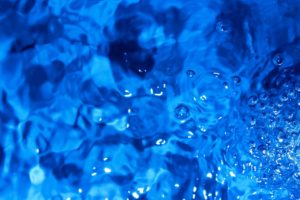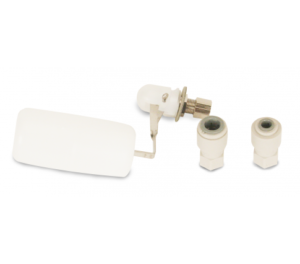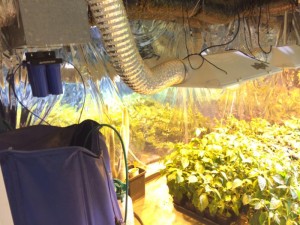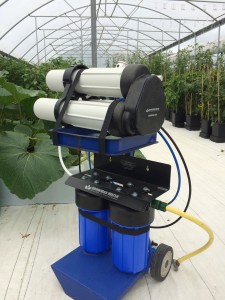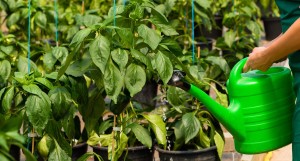Plants, like humans, need a healthy feeding, according on the genetics and depending on the growing stage. Calcium and magnesium are two of the indispensable nutrients in their diet, as important as phosphorus, iron, nitrogen, potassium, and manganese, in the right amounts. A lack of this essential nutrients can cause problems in the plants while they are growing and we get bad final results.
Knowing some of the symptoms of a lack of basic nutrients in plants, we can control better the plants growth and we will ensure that they have the right amounts of food.However, it is important to distinguish between the macronutrients, that are absorbed in big amounts, and the micronutrients, which are also necessary for plants nutrition, but only in small amounts (high levels of this nutrients can damage them).
Previously in other post, we talked about the importance of calcium and magnesium in plants. Today we are going to talk about the skills of the rest of essential nutrients, starting with the macro-nutrients, the ones plants need in big quantities.
What are the essential nutrients for our plants?
Phosphorus
It’s an essential nutrient, because it is one of the necessary elements for carrying the energy through the plant. Phosphorus helps to build cells, DNA, proteins and enzymes. The higher concentrations of phosphorus are in the plants roots, the growth peaks and the vascular tissue, what it means, in the develop parts of the plant.
In young plants, the presence of phosphorus is indispensable for a good growth, because in the first quarter of plants life is when more phosphorus they absorb.
When there is a lack of phosphorus: the plant stops growing and the branches development slow down; also it turns in a dark green color. Finally, if the time goes by and we don’t fix the lack of phosphorus, can appear necrosis in the oldest leaves and deformation.
Nitrogen
It’s one of the most important nutrients that the plants need, and an essential part of proteins, chlorophyll, vitamins, hormones and DNA. Nitrogen is a component of the enzymes, so it has an active role in the plant metabolism, promoting their growth. Some positive effects of nitrogen in the plants are bigger leaves, more quantity of branches and a longer growing season.
But a lack of nitrogen can cause the opposite effects. A lack of this nutrient delay synthesis protein, and the plant have to broke its own proteins to keep satisfying its needs. When this happens, it produces a surplus of carbohydrates due to the proteins breakdown. That’s why leaves stems and plant stem turn into purple color.
Due to the lack of nitrogen, also appears with time a chlorophyll breakdown, turning green color of the leaves into yellow or whitish green, till they finally wither and fall down.
A lack of nitrogen also can affect the plants roots. If there is a lack of nitrogen during the early stage of growing, the whole plant is damaged and it doesn’t grow enough (the plants organs don’t grow right, stooping general growth). If it happens in advanced age, effects aren’t so devastating as when the plant is younger.
Potassium
Potassium is present around the whole plant and it’s essential to carry the water through all the plant structure. It’s also indispensable for opening and closing stomata and get strength and quality to the plant.
When there is a lack of potassium there is an evaporation reduction. When this happens, the leaves temperature increase and cells burn, mainly in the edge of the leaves.A lack of potassium makes that leaves tips show a grey edge, which then turn into rust-colored, till leaves fall off. Another symptom are yellow leaves from the edges to the leaves nerves, and brow and rust-colored spots of died tissue.
An overload of salt (sodium) around the plants roots can cause the lack of potassium. That’s known as a Nutrient Lockout, when plant roots are blocked and they can’t absorb the rest of nutrients they need.
In the other hand, we have micronutrients. Despite being needed in less amounts by the plants, they are also essential for they growth and healthy.
Iron
It’s a common nutrient in the soils but in large amounts, could be toxic for plants, so it’s a micronutrient. Furthermore, iron is more difficult to absorb than other nutrients because usually it’s present in the soil as an insoluble component. There are only few soils where iron is available for plants in the necessary form.
The absorption of iron by plants greatly depends on the pH. Normally, acid soils have enough iron available for plants. Some symptoms of a lack of iron: leaves that continuously turn into yellow, or even into white; leaves with necrosis and plants that stop growing.
Manganese
Manganese is found in high concentrations in the meristem (the most active part in plants), and to a lesser extent, in plants roots and stems. It’s an essential trace element for plants, which turn on enzymatic actions, as for example, the water division during photosynthesis or the cell membranes formation.
This nutrient is absorbed by plants through the roots and goes across the whole plant haltingly, but easier than other nutrients, like iron or calcium, less soluble.
A lack of manganese cause physiological changes in plants: the proteins production decrease, minimizing the plant capability for absorbing nitrates. When this happens, the plants growth is delayed and appear symptoms in the leaves, similar to the symptoms of the lack of iron or magnesium.
But in the lack of manganese cases, yellow spots are between lateral nerves, and the rest of the leaf keeps its green color. No whitening. So this must not be confused with the lack of iron, which turn yellow al the leaf.
High levels of pH can make a lack of manganese, because with a high Ph, manganese becomes manganese dioxide, which can’t be absorbed by the plant.
Reverse osmosis to prevent the lack and the excess of nutrients
 There are a lot of fertilizer products and nutritional supplements to feed our plants: compost products, fluid products or even solid. Adding these products, we give all the essential nutrients to the plants, according to their needs in each growing stage, to prevent the symptoms and problems explained above.
There are a lot of fertilizer products and nutritional supplements to feed our plants: compost products, fluid products or even solid. Adding these products, we give all the essential nutrients to the plants, according to their needs in each growing stage, to prevent the symptoms and problems explained above.
But in advance of adding these nutritional supplements to the irrigation water, it’s very important to control the EC of water. In such way, we will know the amount of salts and minerals already dissolved in our tap water. However, we can’t control the exact amount of each mineral and salts in water only with an EC meter. So if we add to this water high amounts of calcium, for example, and the water already have a lot of calcium (hard water) we’ll cause a Nutrient Lockout in the roots. Or we can cause the opposite situation if the water we are using have low levels of calcium.
Using reverse osmosis water, we lower EC up to 95% and get water free of salts and minerals. We achieve the perfect balance between water and the right amounts of nutrients for feeding our plants. How? We know that plants can receive an EC of up to 1,4 to 2,2, according to its genetics and depending on the growing stage. The higher the EC level is, less nutrients we can give to our plants. So if we start with an EC in the water of only 0,1 or 0,2, then we will be able to add much more nutrients.
Essential nutrients and pure water
Most exigent growers prefer to use directly ultra pure water (000 ppm), to be sure that all the nutrients they give to the plants are exactly from the nutrients solutions and supplements, but not from water. And for that, they use reverse osmosis systems like Maxquarium 000PPM, which has been designed for hydroponics and also for aquariums industry, where they need the most pure water, and that produces up to 20L/ h of pure water.
GrowMax Water also offers the de-ionization filter Kit to achieve an ultra pure water (000 ppm). This is an available accessory to install in all reverse osmosis systems.
Using ultra pure water, growers only have to add the amount of nutrients they want to the water with their nutrient supplement, without worry about the EC of the water they will use.
To sum up, using reverse osmosis together with nutrient supplements, we can prevent growth and nutritive disorders mentioned above. We must keep in mind the right amounts of nutrients our plants need, according to their growing stage and features, and control their growing.

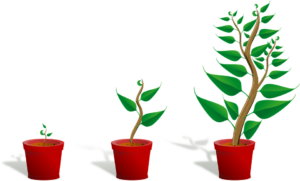

 All the reverse osmosis systems must send waste water to the drain. Why? The different polyamide layers of the membrane retain the salts from the water, but that portion of the water doesn’t go to the drain needs to be flushed out of the membrane, so that the membrane doesn’t become incrusted with those salts.
All the reverse osmosis systems must send waste water to the drain. Why? The different polyamide layers of the membrane retain the salts from the water, but that portion of the water doesn’t go to the drain needs to be flushed out of the membrane, so that the membrane doesn’t become incrusted with those salts.
 GrowMax offers solutions to improve your installation or help in the case of adverse water conditions. These solutions are different accessories that will help you to boost the membrane production:
GrowMax offers solutions to improve your installation or help in the case of adverse water conditions. These solutions are different accessories that will help you to boost the membrane production:
